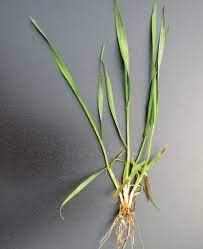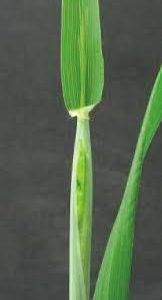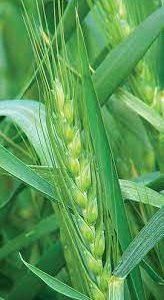By Eros Francisco
The development of a plant occurs through growth stages that are well defined and visually easy to identify. A crop manager can adjust some environmental conditions for good yields. But getting to know how a wheat plant develops is crucial to promoting and applying management practices in the field that can make a crop more sustainable and profitable. A plant’s growth is divided into vegetative and reproductive stages, each with morphological characteristics and physiological processes.
Wheat growth and development are measured by the amount of dry weight accumulation in the plant that happens through photosynthesis, a physiological process of plants to manufacture carbohydrates, proteins, and oils, which is directly related to environmental conditions. In other words, wheat growth and yield result from genetic and environmental interaction during the plant’s life cycle.
Knowing how wheat plants grow can help use management practices more effectively to obtain higher and more sustainable yields. Farmers can manage some environmental factors to maximize yield, such as seeding at the right time, using adequate plant density, fertilizing the soil, and optimizing weed, insect, and disease control while air temperature and solar radiation rely on weather conditions that affect the way plants develop.
The development of a wheat plant is generally divided into five steps: leaf and tiller development, stem elongation, heading, flowering, and grain filling and ripening, which were numerically subdivided (table 1) to describe important developments of the plant, as stated by the most used growth stage scale for wheat developed by W. Feekes in 1941. The vegetative phase begins with the emergence (Feekes 1) that takes place when the seedlings arise from the soil surface, followed by the development of tillers (Feekes 2 and 3), and the lengthening of leaf sheaths and the elongation of stems with new leaves made visible (Feekes 4 to 10). After that, the reproductive stages begin when the panicles (heads) start to emerge from the top of the plants’ stems (Feekes 10.1 to 10.5), continue through flowering (10.5.1 to 10.5.4), and end with the ripening of the kernels (Feekes 11.1 to 11.4).

Figure 1. Leaf structure.

Figure 2. Tillering.

Figure 3. Flag leaf.

Figure 4. Heading.
Table 1. General Wheat Growth Stages Developed by Feekes
Table 2 presents a more detailed description of each growth stage and associated management practices.
Table 2. Detailed Wheat Growth Stages Developed by Feekes and Management Practices Related to Each
Descriptions of the vegetative and reproductive stages represent the development of an individual plant, but for staging a wheat field, at least 50 percent of the plants need to be at that stage or beyond. To increase the accuracy, make sure to collect plants from different points of the field, including at least one 10-plant sample for every 10 acres to obtain adequate determination of the average stage of development. Plants evaluated should be randomly selected at each inspection site, but avoid selecting only the largest or most vigorous ones. To ensure random selection of plants within a row, try to evaluate consecutive plants with undamaged main stalks.
The appropriate identification of growth stages will guarantee that people involved in wheat production use the same terminology when discussing plant development, reducing the risk of damaging a field with some management practice decision. For example, if any herbicide treatment is recommended after wheat reaches the Feekes 6 stage or a fertilizer application at the right time provides a greater response, the proper identification of the stage is necessary or a misapplication of the products may occur.
Source : aces.edu